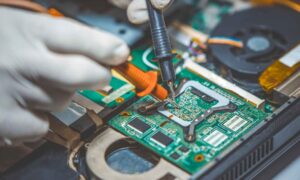Having access to a computer is becoming increasingly important in today’s digital age. However, for low income families, the cost of purchasing a computer can be a barrier to accessing the internet and all the resources it has to offer. Fortunately, there are a number of programs and resources available that provide free or low-cost computers to low-income families. In this article, we will discuss some of the different options available for low-income families looking to get a computer.
Free Computers for Low-Income Families
One option for low-income families is to look for programs that provide free computers. These programs are often run by non-profit organizations, schools, or government agencies. Some examples include:
The National Digital Inclusion Alliance (NDIA) – NDIA works with local organizations to provide free computers and internet access to low-income families.
Computers with Causes – This organization provides free computers and laptop to low-income families, as well as those with disabilities, veterans, and senior citizens.
Computers for Classrooms – This organization provides free computers to schools and non-profit organizations, which can then be distributed to low-income families in the community.
It is worth doing some research and exploring the different programs available in your area to find the best fit for your family’s needs.
Affordable Computers for Low-Income Families
Another option for low-income families is to look for affordable computers. Some organizations provide vouchers or discounts that can be used to purchase a computer or internet service. Some examples include:
PCs for People – This organization provides low-cost computers and internet services to low-income families.
The Online Computer Library Center (OCLC) – OCLC offers a program called “Connecting for Good” that provides low-cost computers and internet services to low-income families.
The National Cristina Foundation – This foundation provides low-cost computers and technology to non-profit organizations, which can then be distributed to low-income families.
Computers for Youth: This organization provides free computers to low-income K-12 students and their families.
The On It Foundation: This organization provides free computers to low-income families with children who have special needs.
World Computer Exchange: This organization donates computers to schools and non-profits serving low-income communities.
Government Grants for Low-Income Families
In addition to free and low-cost computer programs, there are also government grants available to help low-income families purchase a computer. Some examples include:
The Federal Communications Commission’s (FCC) Lifeline program – This program provides a discount on telephone or internet service to low-income families.
The U.S. Department of Agriculture’s (USDA) Distance Learning and Telemedicine program – This program provides grants to rural communities to purchase technology, including computers, to support distance learning and telemedicine.
It’s worth researching if your state has any such program that will help you in getting the computer.
Other Programs Help low income with free computers
There are also other programs that can help low-income families with computer-related needs. These can include:
Low income computer support services: Some organizations provide technical support to help low-income families troubleshoot computer problems.
Low income computer repair services: Some organizations provide repair services to help low-income families fix their computers.
Low income computer financing options: Some organizations offer financing options to help low-income families pay for computers or computer-related expenses.
Low Income Family Computer Assistance
There are also programs that can help low income families pay for computer-related expenses. These can include:
Low income computer grants: Some organizations provide grants to help low income families pay for things like computer repair, internet access, or training.
Low income computer donations: Some organizations accept donations of computers and other equipment, which can then be provided to low-income families.
Low income computer resources: Some organizations provide resources and information to help low-income families access and afford technology.
Low Income Computer Access
Low income computer programs are available to help families in need get access to technology. With the increasing importance of computers in education and job search, having access to a computer can be a real game changer for low income families. Here are some options for getting a free or affordable computer.
In addition to getting a computer, low-income families may also need help getting internet access. There are programs that can help with this as well. Some examples include:
Low income computer distribution programs: Some organizations provide free or low-cost internet access to low-income families.
Low income computer recycling programs: Some organizations accept donations of used computers and other equipment, which can then be provided to low-income families.
Low income computer refurbishing programs: Some organizations repair and refurbish used computers, which can then be provided to low-income families.
Low Income Computer Training
Getting a computer is just the first step, many low-income families also need help learning how to use it. There are programs that can help with computer training, such as:
Low income computer training programs: Some organizations provide training on how to use a computer, the internet, and different software programs.
Low income computer literacy programs: Some organizations provide education on general computer and internet use.
Low income computer education programs: Some organizations provide educational opportunities for low-income families, such as online classes or computer coding classes.
Conclusion
In conclusion, there are many options available for low-income families to get access to a computer. From free computers to affordable options, to grants and other types of assistance, there is help out there for those in need. It’s worth doing some research and exploring the different programs available in your area to find the best fit for your family’s needs. Remember that getting a computer is just the first step, and many programs also offer training and support to help you make the most of your new technology. With the right resources and support, low-income families can overcome the digital divide and have access to the same opportunities as those with more resources.



































